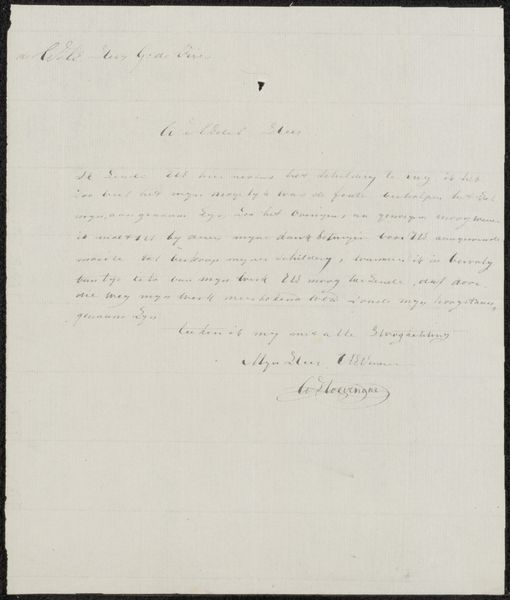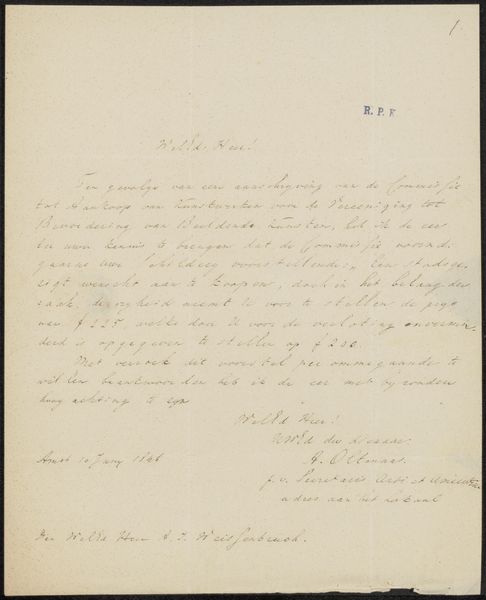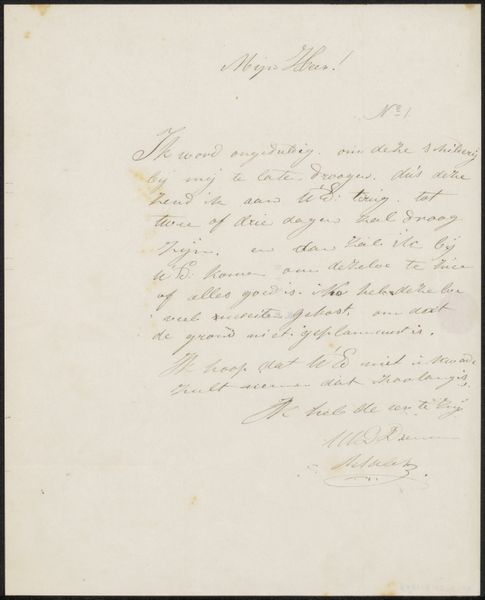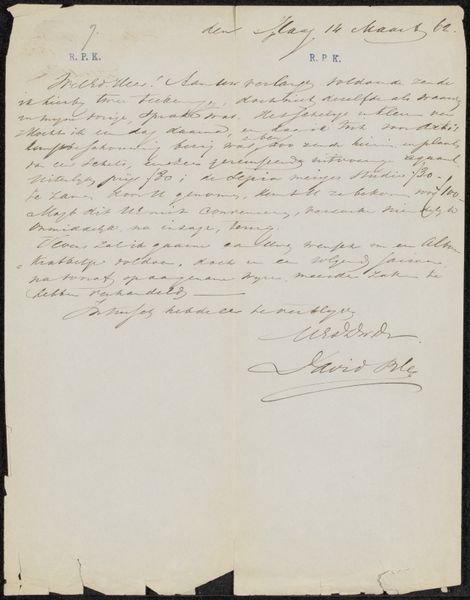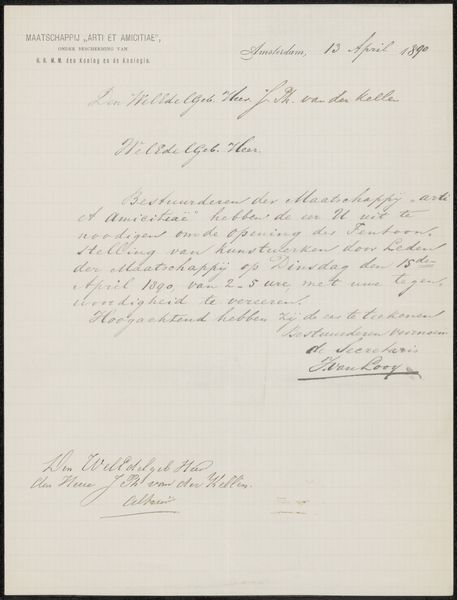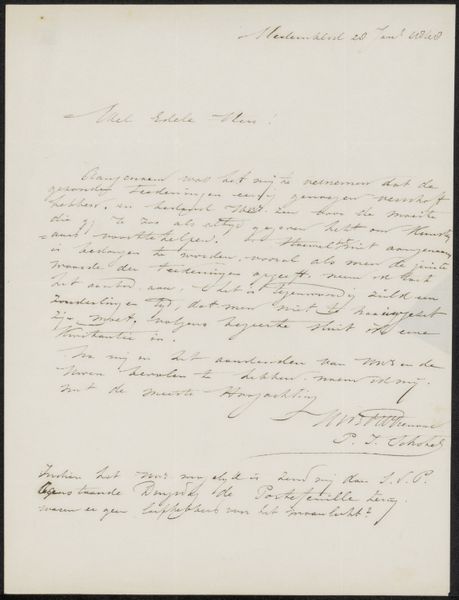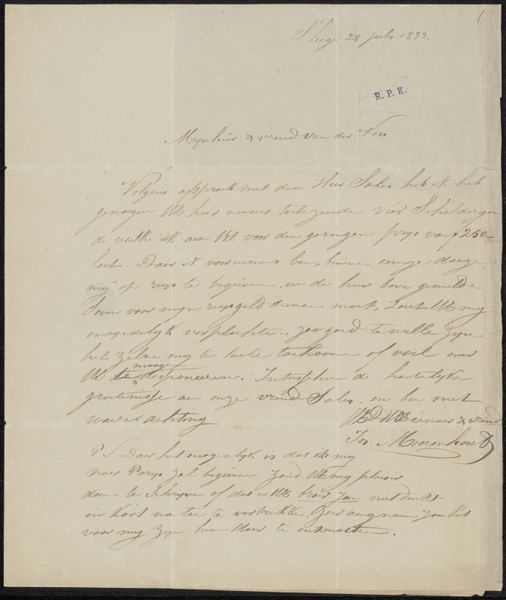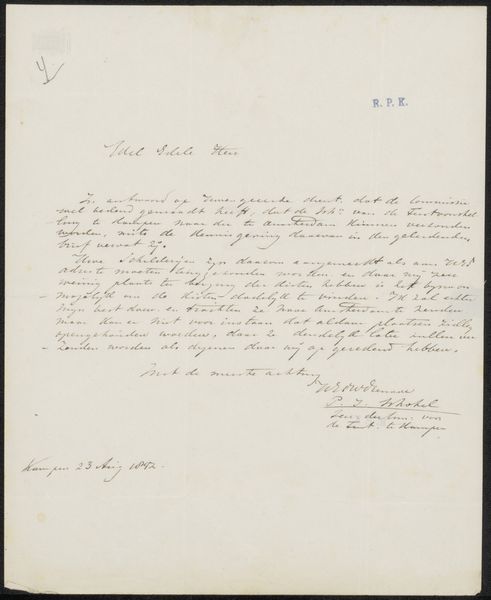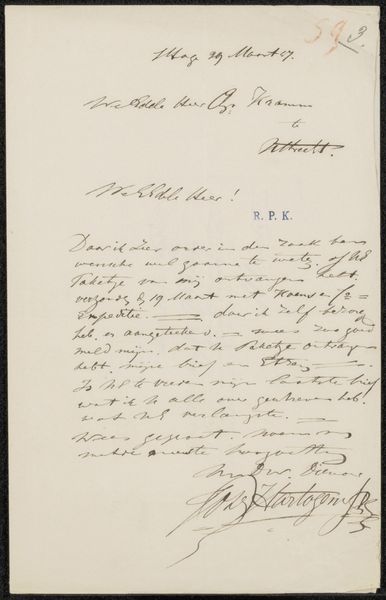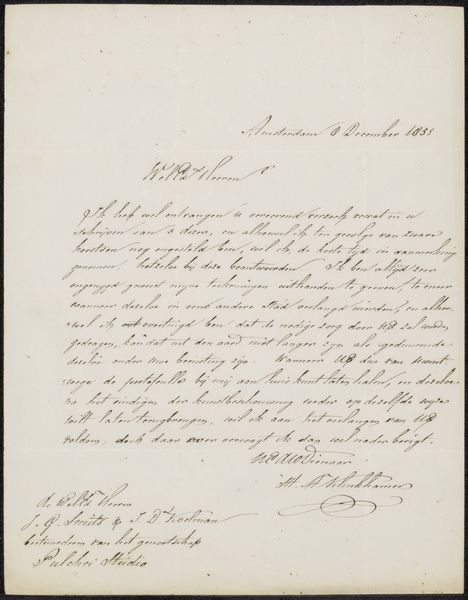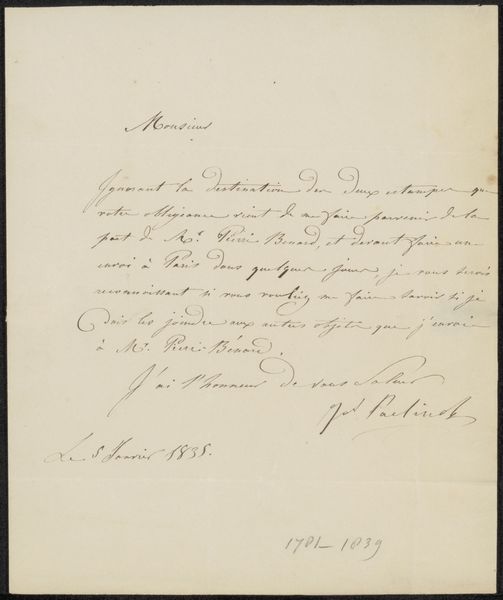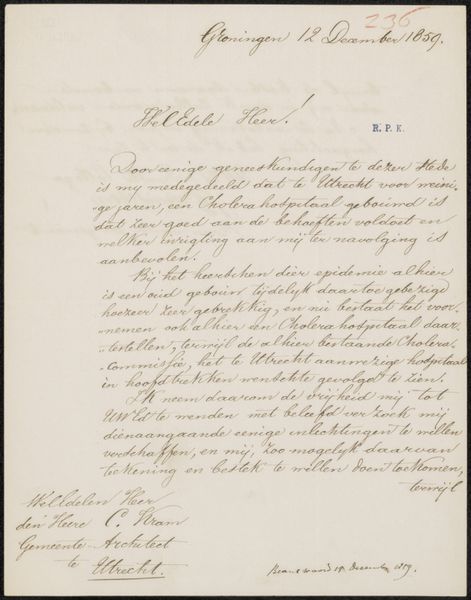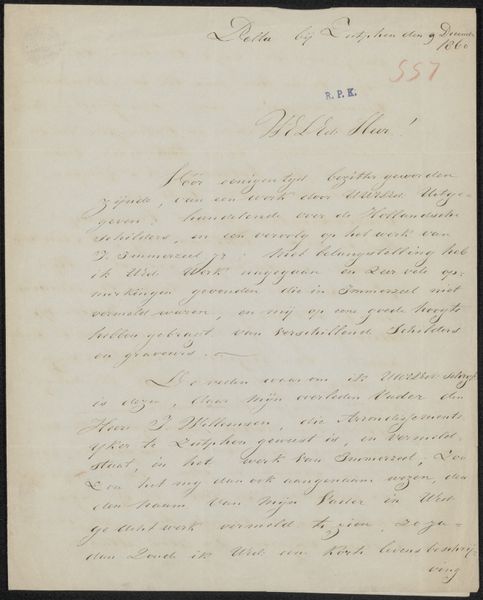
Brief aan J.W.A. van Sijpesteijn, secretaris van Maatschappij der Tekenkunst, Kunst zy ons doel Possibly 1846 - 1848
0:00
0:00
drawing, paper, ink
#
portrait
#
drawing
#
paper
#
ink
#
romanticism
Copyright: Rijks Museum: Open Domain
Curator: At first glance, this drawing gives me a distinct feeling of fragility—almost as if the paper might crumble with the slightest touch. The wispy lines of ink float delicately against the cream tone. Editor: Indeed, a good starting point to think about Petrus Johannes Schotel’s "Brief aan J.W.A. van Sijpesteijn, secretaris van Maatschappij der Tekenkunst, Kunst zy ons doel", possibly from 1846 to 1848. It’s currently held in the Rijksmuseum. Created using ink on paper, it offers a fascinating glimpse into artistic correspondence of the period. Curator: Correspondence it is, I imagine discussing pressing issues of representation and aesthetic politics. The flourishes in the handwriting strike me; even the letter's script contains elements of artfulness. Editor: It reflects Schotel’s broader artistic and social landscape. Artists relied on networks, societies, and patrons. Letters like this, even in their seemingly mundane function, held significant power for professional standing, resources, and influencing art movements. The Romanticist underpinnings, the striving to capture subjective and political values is evident in what he’s writing as much as how he’s writing it. Curator: What truly pulls me in is how, technically speaking, Schotel has managed to orchestrate such nuance from, ostensibly, such basic materials—brown ink against neutral paper! Editor: Right, the materiality lends a particular intimacy and immediacy. The choice to use ink on paper connects the Romantic period with its roots in history. What the medium represents connects us to history itself. Curator: In essence, we can see how something seemingly simple, a mere note, encapsulates a pivotal juncture in artistic creation, discourse, and its ties to larger social issues of artistic representation. Editor: Agreed, focusing our understanding this correspondence sheds light onto art creation as an interplay between history, politics, material conditions, and aesthetic intentions.
Comments
No comments
Be the first to comment and join the conversation on the ultimate creative platform.
